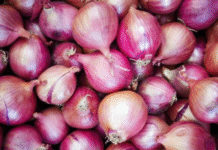Brighter days ahead for Indo-Bangla river trade

If you happen to be on the Padma or Meghna rivers for a cruise or are travelling to the country’s southern part, you will in no way miss a sporadic presence of numerous slow-moving small and large vessels alongside their sudden blasts of horns.
Most are engaged in transporting cargo from one part of the country to another. But sure to be among them are some going beyond the border ferrying goods between Bangladesh and India.
And the frequency of their trips between the two neighbouring nations is increasing gradually; so is the quantity of cargo being hauled.
Plaudits should be given to the increased use of the 4,000 to 6,000 kilometres of waterways by businesses to transport their import cargoes that has opened up opportunities for local cargo vessel operators.
Cargo transport through inland waterways between Bangladesh and India has just nearly doubled to 27.80 lakh tonnes in fiscal 2019-20 from 14.37 lakh tonnes a decade ago, showed data from Bangladesh Inland Water Transport Authority (BIWTA).
This was being facilitated by a Protocol on Inland Water Transit & Trade between Bangladesh and India as fly ash, one of the key ingredients of cement, was mainly imported through waterways from the neighbouring country.
And opportunities for more freight transport business are arising.
This is resulting from increasing bilateral trade between the two neighbours, opening of new river routes and prospects of an increase in the shipment of goods by India under transit arrangements in the days to come, said operators.
“We see a very good prospect for business,” said Syed Bashir Ahmed, managing director of Winship Logistics, one of the leading cargo vessel operators between India and Bangladesh’s inland waterways.
More than 300 vessels operate on inland waterways per month between the two nations, annually generating around Tk 300 crore in revenue as freight charge for operators, sector insiders said.
Even one and a half decades ago Indian vessels dominated the protocol routes, said cargo vessel owners.
Local operators gradually entered and made gains on the market share. Today, local operators grab 99 per cent share of the cargo freight market, according to the BIWTA data.
The number of trips of local vessels increased after 2005 and the frequency went up in the subsequent years as demand for fly ash to produce more cement rose, said Ahmed.
In 2019-20, fly ash accounted for 98 per cent of the total cargo transported on the waterways mainly between Narayanganj and Kolkata. Steel products, stone chips and containers made up the rest. Though the amount of transit cargo increased in recent years, it still accounts for an insignificant portion.
Only 13,000 tonnes of transit cargo were transported through inland waterways last fiscal year. The amount was 7,300 tonnes in fiscal 2010-11, according to BIWTA data.
Transit and transshipment will increase and local logistics companies will reap its benefits, said Ahmed.
“Our business opportunity will expand. There is not enough vessels in India. Our vessels will be used,” he said, expecting the volume of cargo transport over waterways to touch one crore tonnes in the next five years.
Business prospects look good, subject to maintenance of navigability of the rivers, said K Saiful Alam Miru, proprietor of Nexus Corporation.
“One of the shortcomings is that this is one-way traffic. We cannot take anything from here as export,” said Miru, also managing partner of the Gazaria Builders and Engineers.
“It would be economical if we could transport cargoes both ways. Scope to carry assorted cargoes will enable us to make the business viable,” he said.
The two firms together have a fleet of 50 vessels.
“We are trying to ship cement to India. There is a good market for local cement in Northeast India. We will be able to take a higher quantity at a cheaper rate there,” said Ahmed.
“We are also trying to ship garment items through containers,” he added.
Indian exporters of yarn, motor vehicles and parts are willing to ship their export through waterways, he said.
“We can do that if the National Board of Revenue allows us and creates the facility,” he said, urging the NBR to allow movement of more goods through waterways to reduce business costs and facilitate flourishing of the sector.
Trade between Bangladesh and India stands at around $9.21 billion with the scales heavily tilted towards India as Bangladesh’s export amounts to around $1 billion.
Truckers and cargo vehicle operators transport a large portion of the import-export goods. Transport through waterways will increase revenue generation if the authority allows more products to pass over the rivers instead of roads, said Nazmul Hossain Hamdu, vice president of Bangladesh Cargo Vessel Owners’ Association.
This will reduce the pressure on roads, he said. Cost of freight will also reduce largely for use of waterways, said operators.
Two routes — Daudkandi-Sonamura and Rajshahi-Godagari-Dhulian, India — were added as protocol routes in December last year, said BIWTA Director (traffic) Mohammad Rafiqul Islam.
“Prospects of water transport between Bangladesh and India are bright.”









